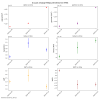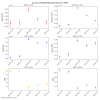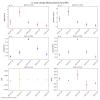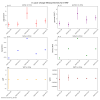TITLE: 07/16 Eve Shift: 2330-0500 UTC (1630-2200 PST), all times posted in UTC
STATE of H1: Lock Acquisition
INCOMING OPERATOR: TJ
SHIFT SUMMARY:
Currently relocking and in MOVE_SPOTS. This last relock was looking so bad up until ENGAGE_ASC_FOR_FULL_IFO, I am very surprised it made it (40min build ups). The first lock reacquisitoin of my shift, ALSX was having some issue with the crystal frequency and was losing lock a lot. Also, there were many times when it was looking really bad but would hold on (ndscope). Besides ALSX having trouble that first round of relocking, there haven't been any issues.
LOG:
21:20UTC Observing at 137Mpc and have been Locked for 29 minutes
21:23 Dropped out of Observing to touch up OPO temperature and run scan sqz ang
21:27 Observing
22:34 Lockloss
- Alignment looked so bad during DRMI. I tried adjusting for a while, but eventually started an initial alignment
- Multiple lockloss due to ALSX unlocking
00:52 NOMINAL_LOW_NOISE
00:55 Observing
04:12 Lockloss
| Start Time |
System |
Name |
Location |
Lazer_Haz |
Task |
Time End |
| 21:09 |
ISS |
Jennie, Rahul |
Optics Lab |
Local |
Working on the PSL ISS system |
22:36 |
| 00:53 |
|
Jennie |
OpticsLab |
n |
Hunting down her phone |
00:58 |




























